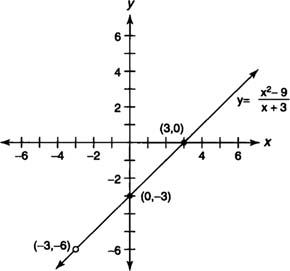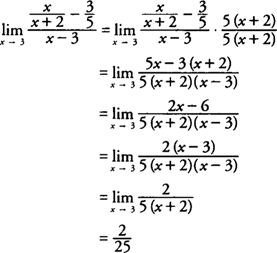Published On:Friday, 9 December 2011
Posted by Muhammad Atif Saeed
Evaluating Limits
Evaluating Limits
Limits of functions are evaluated using many different techniques such as recognizing a pattern, simple substitution, or using algebraic simplifications. Some of these techniques are illustrated in the following examples.Example 1: Find the limit of the sequence:

Because the value of each fraction gets slightly larger for each term, while the numerator is always one less than the denominator, the fraction values will get closer and closer to 1; hence, the limit of the sequence is 1.
Example 2: Evaluate
 .
. When x is replaced by 2, 3 x approaches 6, and 3 x − 1 approaches 5; hence,
 .
. Example 3: Evaluate
 .
. Substituting −3 for x yields 0/0, which is meaningless. Factoring first and simplifying, you find that
|
The graph of (x2 − 9)/(x + 3) would be the same as the graph of the linear function y = x − 3 with the single point (−3,−6) removed from the graph (see Figure 1 ).
| | |||
| |||
| | |||
| |||
| |
 .
. Substituting 3 for x yields 0/0, which is meaningless. Simplifying the compound fraction, you find that
|
Example 5: Evaluate
 .
. Substituting 0 for x yields 0/5 = 0; hence,

Example 6: Evaluate

Substituting 0 for x yields 5/0, which is meaningless; hence,
 DNE. (Remember, infinity is not a real number.)
DNE. (Remember, infinity is not a real number.) 











